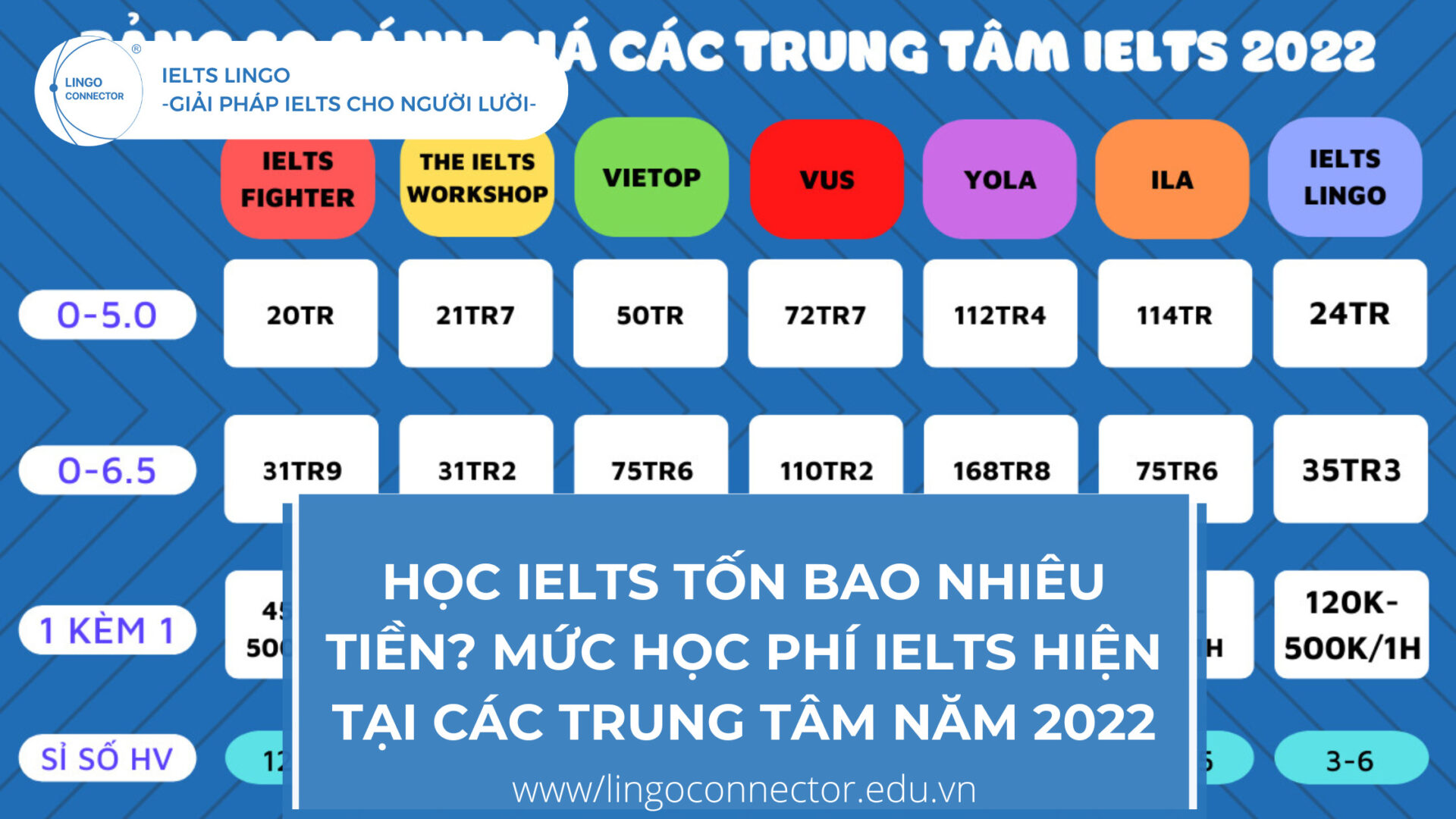Bạn đang quan tâm đến các bài mẫu IELTS Writing Task 1 phải không? Tổng hợp đề thi 2020 ielts writing task 1 cập nhật nhanh và chính xác giúp các sĩ tử luyện thi IELTS nắm bắt được xu hướng và độ khó của đề thi IELTS . Đề thi và bài mẫu được cập nhật liên tục trên trang web chính thức của Lingo Connector giúp bạn luyện thi và đạt 8.0 một cách dễ dàng.
Những bài viết dưới đây đều được Lingo Connector chọn lọc từ các bài viết hay nhất, được đánh giá, cũng như có số điểm cao trong kỳ thi IELTS. Sẽ mang đến cho bạn cách triển khai ý và sử dụng từ vựng, ngữ pháp một cách hiệu quả nhất để tạo ra một bài viết hay.
Nhưng trước tiên, nếu vẫn chưa rõ về Task 1, các bạn có thể tham khảo thêm Hướng dẫn cách viết IELTS Writing Task 1 cho người mới bắt đầu nhé!
1. Các bước học giúp đạt điểm số cao nhất đối với bài thi 2020 IELTS writing task 1.
Trên đây là 5 bước vô cùng quan trọng giúp bạn tạo ra một bài viết hấp dẫn. Tham khảo ngay và viết bài
Bước 1: Before Writing – động não & thảo luận để tạo ý tưởng cho bài viết, quyết định mục đích & đối tượng và sắp xếp ý tưởng của bạn.
Bước 2: Make a draft – viết bản nháp đầu tiên, không cần phải quá hoàn hảo. Nhưng đừng lo lắng về những chi tiết nhỏ mà chỉ cần viết!
Bước 3: Review – xem lại nội dung và sắp xếp lại các ý tưởng của bạn. Sau đó cải thiện những gì bạn đã viết, làm cho nó rõ ràng hơn, thay đổi từ & thông tin.
Bước 4: Edit – Sửa chính tả, dấu câu, ngữ pháp và bố cục lại văn bản cho rõ ràng.
Bước 5: Publish – Viết bản thảo cuối cùng và gửi cho những người có chuyên môn hoặc bạn bè đánh giá, và note lại những lỗi sai để tránh gặp phải lần 2.
2. Một số bài mẫu và Tips cho bài thi 2020 ielts writing task 1 theo từng dạng bài.
1. Bài mẫu ielts writing task 1 – Dạng Line graph

➥ Mẹo cho dạng bài Line Graph.
Dạng biểu đồ luôn thể hiện sự biến đổi của các thông số theo thời gian. Dưới đây là một số lời khuyên để bạn mô tả bài viết này một cách dễ dàng hơn.
- Thứ 1 cố gắng viết thành 4 đoạn (Gồm Giới thiệu, Tóm tắt các ý chính và 2 đoạn mô tả chi tiết)
- Với đoạn văn tóm tắt, bạn cần nhìn vào bức tranh tổng quan của vấn đề – Sự thay đổi của các đường từ thời điểm bắt đầu đến thời điểm kết thúc của biểu đồ (i.e. from the first year to the last). Hay xu hướng của các đường như thế nào (e.g. an overall increase)?
- Bạn không cần đưa ra những con số trong phần tóm tắt mà chỉ nên đề cấp đến những thứ chung nhất ‘overall change’, ‘highest’ and ‘lowest’…
- Đừng bao giờ mô tả từng đường riêng biệt, bởi giám khảo muốn xem sự so sánh giữa các đường.
- Bắt đầu phần mô tả chi tiết (đoạn 3) bằng cách so sánh các dòng trong năm đầu tiên được hiển thị trên biểu đồ (ví dụ: năm 1990, số lượng …).
- Sử dụng thì quá khứ đơn (tăng, giảm) trong những năm đã qua và ‘will’ hoặc ‘is expected/predicted to’ cho các năm sau.
- Đừng sử dụng các thể bị động (e.g. the number was increased), thì hiện tại tiếp diễn (e.g. the number was increasing), hoặc quá khứ hoàn thành (e.g. the number has increased).
➥ Samples: International migration in UK .
The chart gives information about UK immigration, emigration and net migration between 1999 and 2008.
Both immigration and emigration rates rose over the period shown, but the figures for immigration were significantly higher. Net migration peaked in 2004 and 2007.
In 1999, over 450,000 people came to live in the UK, while the number of people who emigrated stood at just under 300,000. The figure for net migration was around 160,000, and it remained at a similar level until 2003. From 1999 to 2004, the immigration rate rose by nearly 150,000 people, but there was a much smaller rise in emigration. Net migration peaked at almost 250,000 people in 2004.
After 2004, the rate of immigration remained high, but the number of people emigrating fluctuated. Emigration fell suddenly in 2007, before peaking at about 420,000 people in 2008. As a result, the net migration figure rose to around 240,000 in 2007, but fell back to around 160,000 in 2008. (159 words)
2. Bài mẫu 2020 ielts writing task 1 – Dạng Bar chart

➥ Samples: Levels of participatio
The charts below show the levels of participation in education and science in developing and industrialised countries in 1980 and 1990.
The three bar charts show average years of schooling, numbers of scientists and technicians, and research and development spending in developing and developed countries. Figures are given for 1980 and 1990.
It is clear from the charts that the figures for developed countries are much higher than those for developing nations. Also, the charts show an overall increase in participation in education and science from 1980 to 1990.
People in developing nations attended school for an average of around 3 years, with only a slight increase in years of schooling from 1980 to 1990. On the other hand, the figure for industrialised countries rose from nearly 9 years of schooling in 1980 to nearly 11 years in 1990.
From 1980 to 1990, the number of scientists and technicians in industrialised countries almost doubled to about 70 per 1000 people. Spending on research and development also saw rapid growth in these countries, reaching $350 billion in 1990. By contrast, the number of science workers in developing countries remained below 20 per 1000 people, and research spending fell from about $50 billion to only $25 billion. (187 words)
3. Mẹo viết bài ielts writing task 1- Dạng Table

➥ Mẹo cho dạng bài Table:
Bảng sẽ rất khó khăn khi chúng chứa rất nhiều số liệu. Vậy nên đây là một số lời khuyên cho bạn:
Chia bài viết thành 4 phần (Introduction, Summary of main points and 2 detail paragraphs)
- Trước khi bạn bắt đầu viết, hãy đánh dấu những con số chính, thường là số lớn nhấ trong mỗi danh mục bảng (trong mỗi cột và hàng). Nếu bạn hiển thị theo năm, hãy tìm những thay đổi lớn nhất về số lượng trong khoảng thời gian. Hoặc bạn có thể đề cập đến các số nhỏ nhất, nhưng nhớ là bạn có thể bỏ qua những số ở giữa.
- Đối với đoạn tóm tắt, hãy thử so sánh toàn bộ các phần (cột hoặc hàng) thay vì từng ô riêng lẻ trong bảng. Nếu bạn không thể so sánh toàn bộ danh mục, hãy so sánh số lớn nhất và số nhỏ nhất. (viết khoảng 2 câu)
- Mô tả/ so sánh các keys mà bạn đã tô sáng – bao gồm ít nhất 3 số liệu trong mỗi đoạn.
- Sử dụng thì quá khứ đơn cho những năm trước và ‘will’ hoặc ‘is expected/predicted to’ cho những năm sau. Nếu không có khoảng thời gian thì sử dụng hiện tại đơn.
➥ Samples: Poverty proportion in Australia
The table below shows the proportion of different categories of families living in poverty in Australia in 1999.
The table gives information about poverty rates among six types of household in Australia in the year 1999.
It is noticeable that levels of poverty were higher for single people than for couples, and people with children were more likely to be poor than those without. Poverty rates were considerably lower among elderly people.
Overall, 11% of Australians, or 1,837,000 people, were living in poverty in 1999. Aged people were the least likely to be poor, with poverty levels of 6% and 4% for single aged people and aged couples respectively.
Just over one fifth of single parents were living in poverty, whereas only 12% of parents living with a partner were classed as poor. The same pattern can be seen for people with no children: while 19% of single people in this group were living below the poverty line, the figure for couples was much lower, at only 7%. (150 words, band 9.0)
4. Bài mẫu 2020 IELTS writing task 1 – Dạng Pie chart

➥ Samples:
The pie charts compare the amount of electricity produced using five different sources of fuel in two countries over two separate years.
Total electricity production increased dramatically from 1980 to 2000 in both Australia and France. While the totals for both countries were similar, there were big differences in the fuel sources used.
Coal was used to produce 50 of the total 100 units of electricity in Australia in 1980, rising to 130 out of 170 units in 2000. By contrast, nuclear power became the most important fuel source in France in 2000, producing almost 75% of the country’s electricity.
Australia depended on hydro power for just under 25% of its electricity in both years, but the amount of electricity produced using this type of power fell from 5 to only 2 units in France. Oil, on the other hand, remained a relatively important fuel source in France, but its use declined in Australia. Both countries relied on natural gas for electricity production significantly more in 1980 than in 2000. (170 words)
5. Bài mẫu 2020 ielts writing task 1 – Dạng Map

➥ Samples: Village of Chorleywood
The map shows the growth of a village called Chorleywood between 1868 and 1994.
It is clear that the village grew as the transport infrastructure was improved. Four periods of development are shown on the map, and each of the populated areas is near to the main roads, the railway or the motorway.
From 1868 to 1883, Chorleywood covered a small area next to one of the main roads. Chorleywood Park and Golf Course is now located next to this original village area. The village grew along the main road to the south between 1883 and 1922, and in 1909 a railway line was built crossing this area from west to east. Chorleywood station is in this part of the village.
The expansion of Chorleywood continued to the east and west alongside the railway line until 1970. At that time, a motorway was built to the east of the village, and from 1970 to 1994, further development of the village took place around motorway intersections with the railway and one of the main roads. (174 words)
Xem thêm : Hướng dẫn chi tiết cách viết IELTS WRITING PIE CHART giúp thí sinh ăn trọn điểm số
6. Mẹo viết bài IELTS writing task 1 – Dạng Process.

Đây là một dạng bài cũng rất thường xuyên có mặt trong bài thi IELTS, bạn hãy tham khảo bài thi 2020 IELTS writing task 1 dưới đây để tham khảo và rút kinh nghiệm cho bản thân.
➥ Mẹo cho dạng bài Process
Sơ đồ quy trình cho thấy các bước hay giai đoạn để thực hiện một điều gì đó. Dưới đây là một số lời khuyên về cách mô tả bài viết này:
- Viết phần giới thiệu bằng cách diễn giải câu hỏi (viết lại bằng cách thay đổi một số từ).
- Phần tóm tắt, bạn cần chỉ ra có bao nhiêu bước trong quy trình. Sau đó, nói về nơi/ quá trình bắt đầu và kết thúc (nhìn vào giai đoạn đầu tiên và cuối cùng).
- Trong đoạn 3 và 4, hãy mô tả từng bước trong quy trình. Bao gồm các bước đầu tiên và cuối cùng mà bạn đã đề cập trong bản tóm tắt,.nhưng hãy cố gắng mô tả chúng chi tiết hơn hoặc theo một cách khác.
- Bạn có thể mô tả tất cả các bước trong một đoạn,.nhưng sẽ hợp lý và ngăn nắp hơn nếu bạn chia mô tả thành hai đoạn. Chỉ cần bắt đầu đoạn 4 tại đâu đó ở giữa quy trình.
- Đề cập đến tất cả các giai đoạn trong quy trình.
- Sử dụng ngôn ngữ ‘giải trình’, e.g. at the first / second / following / final stage of the process, next, after that, then, finally…
- Thời gian (ví dụ: ngày qua) thường không được hiển thị, vì vậy hãy sử dụng thì hiện tại đơn.
- Nên đưa ra ví dụ ở dạng bị động. E.g: ‘At the final stage, the product is delivered to shops’ (vì chúng tôi không cần biết ai đã giao sản phẩm).
➥ Samples: Forecast in Australia
The figure illustrates the process used by the Australian Bureau of Meteorology to forecast the weather.
There are four stages in the process, beginning with the collection of information about the weather. This information is then analysed, prepared for presentation, and finally broadcast to the public.
Looking at the first and second stages of the process,.there are three ways of collecting weather data and three ways of analysing it. Firstly, incoming information can be received by satellite.and presented for analysis as a satellite photo. The same data can also be passed to a radar station.and presented on a radar screen or synoptic chart. Secondly, incoming information may be collected directly.by radar and analysed on a radar screen or synoptic chart. Finally, drifting buoys also receive data which can be shown on a synoptic chart.
At the third stage of the process, the weather broadcast is prepared on computers. Finally, it is delivered to the public on television, on the radio,.or as a recorded telephone announcement.
Xem thêm: 10 lỗi thường gặp khi làm bài IELTS writing task 1
Tổng kết:
Trên đây là tất cả đề thi 2020 IELTS writing task 1 mới nhất mà Lingo Connector đã tổng hợp được. Hãy tham khảo và luyện tập để làm bài thật tốt các bạn nhé.
Xem thêm tổng hợp để IELTS Writing task 2 năm 2020: Tại đây
Nội dung liên quan
- ĐỀ THI IELTS WRITING TASK 2 NGÀY 22/08/2020
- GIẢI ĐỀ THI THẬT IELTS WRITING TASK 2 ngày 19/12/2020 – TOPIC ART
- ĐỀ THI IELTS WRITING TASK 2 NGÀY 17/9/2020
- VIẾT DẠNG OPINION ESSAY IELTS WRITING TASK 2
- IELTS GENERAL WRITING TASK 1 – CÁC BƯỚC CHUẨN BỊ CHO BÀI VIẾT
[wp-svg-icons icon=”facebook-2″ wrap=”i”] Fanpage: https://www.facebook.com/LingoConnector.edu.vn
[wp-svg-icons icon=”office” wrap=”i”] Địa chỉ: 195/14 Xô Viết Nghệ Tĩnh, Phường 17 quận Bình Thạnh
[wp-svg-icons icon=”phone” wrap=”i”] Số ĐT: 02873038596























